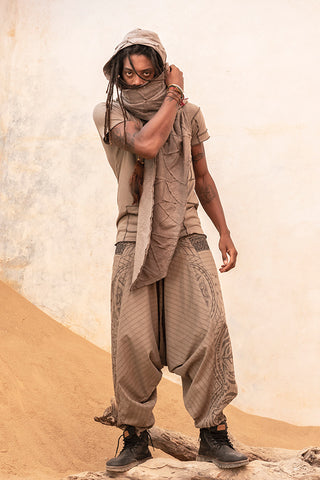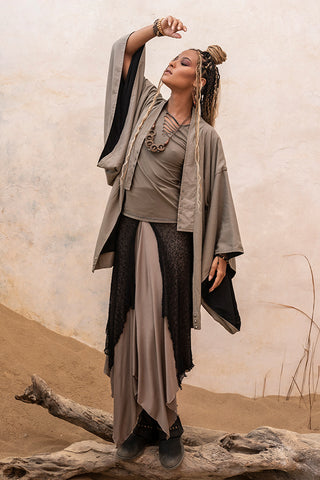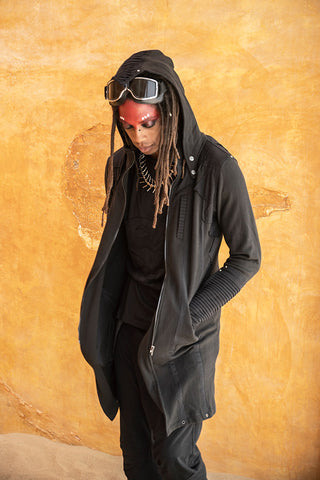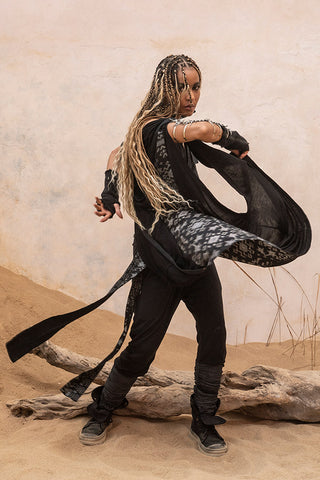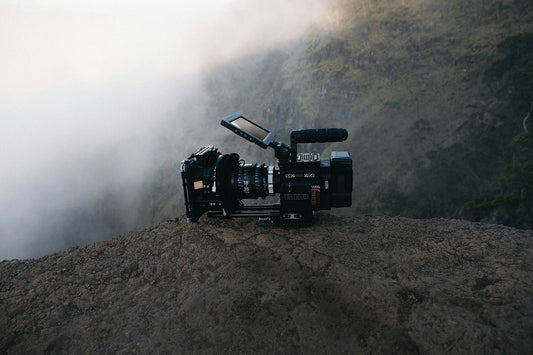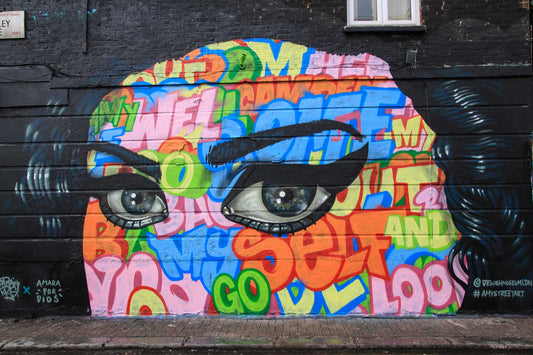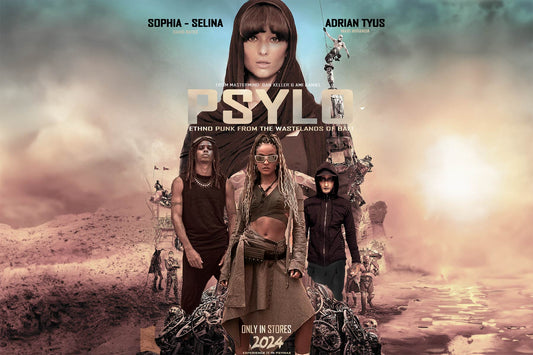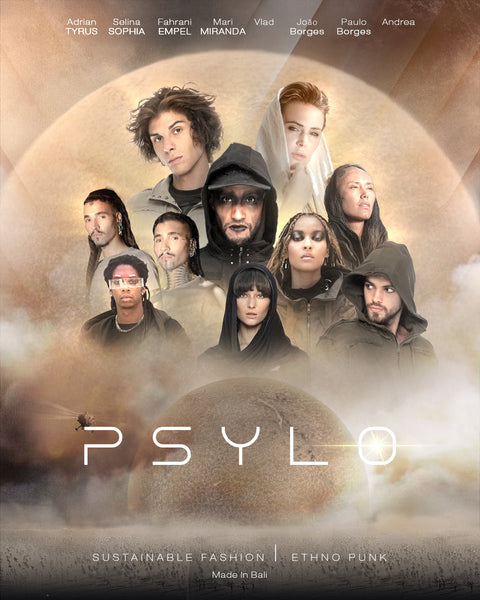
From Dust to Stars: Exploring the Costumes of Dune
Dune unfolds on a desert planet where an indigenous population is enslaved to extract a substance that’s crucial for interstellar travel. Does this narrative sound familiar?
If the answer is yes, it's not a coincidence. In envisioning the Fremen, Frank Herbert, the mastermind behind the Dune saga, drew clear inspiration from nomadic desert populations, and the costume designers for Villeneuve's films, released on 21st October 2021 and 1st March 2024, caught right on when their turn arrived. This explains why their costumes bear a striking resemblance to those one might encounter in a Bedouin tent amidst the Sahara oasis.
We certainly aren't revealing any mystery if we say that we at Psylo have also drawn heavily on that aesthetic imagery. From the first dress we crafted, the tribal inspiration of our clothing was intended to contrast with the cold impersonality of factory clothes, just as a Fremen contrasts with a Harkonnen.
It is therefore with the enthusiasm of a fan that we want to drive you to discover the varied inspirations that guided the hand of the costume designers of Dune.
The Fremen: Clad as Nomads of a Distant Future
Throughout the Dune series, references to Islamic culture and Arabian nomadic lifestyle are abundant, overt and plentiful. Among the Fremen, the sandworm (pictured as a colossal cylinder that traverses the sand-laden with spice, akin to what could have been a 20th-century individual’s view of an oil pipeline) is known as Shai-Hulud: "the eternal thing" in Arabic. The soldiers trained by Paul Muad'dib are dubbed Fedaykin, reminiscent of the fearsome Islamic warriors of the 13th century, the fedayyin.

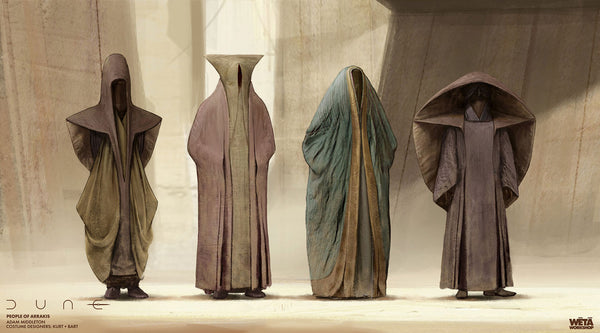
Images above: traditional Tuareg clothing from Timbuktu, Mali, photo by Dr Ondřej Havelka (top/left, source: Wikimedia) and concept art of the people of Arrakeen by Adam Middleton @adamjmiddleton (bottom/right, source: X/Twitter).
Jacqueline West and Bob Morgan, the costume designers behind Denis Villeneuve's opulent cinematic rendition, spared no effort in crafting garments that capture the contrast between the traditions of these civilisations and a world so far in the future as to transcend even our boldest fantasies. Drawing inspiration from Tuareg tribes and David Lean’s Lawrence of Arabia, Fremen attire is fashioned from lightweight, breathable fabrics like cotton and gauze. Functionality is paramount: hoodies are everywhere; women sport long dresses with wide sleeves for sun and sand protection; while men wear loose trousers or Aladdin Pants and layered skirts to facilitate desert manoeuvres.


Images above: Wadi Rum, Jordan, photo by Elias Rovielo (source: Flickr)
The colour palette often uses natural, minimalist and neutral hues to blend in with the surrounding environment. To create it, they drew inspiration from the Jordanian deserts, seeking to reproduce its colour palette: "There were shades of coral, pink, peach, and light brown beige", in the words of location manager Peter Bardsley.
Stillsuits: Retro Cyberpunk Inspired By Desert Wear
Meanwhile, denizens of Arrakis sport futuristic jumpsuits that contour the body, mimicking muscular bands, to evoke a creature poised between organic and cybernetic realms. "Each had to be cut to the actors' body moulds because body movement is what theoretically activates the suit and turns it into a distillery", West explained in interviews.

Image above: early sketches exploring head wraps and cloaks used to survive in the desert on the left, and Rebecca Ferguson and Timothee Chalamet in the United Arab Emirates desert (image from The Art and Soul of Dune art book, which provides a look inside the making of Denis Villeneuve's sci-fi film with insights into how the world of Dune was brought to life).
To construct each stillsuit, about 150 individual pattern pieces had to be crafted separately by skilled artisans. In the story, these suits can collect bodily waste substances (yes, you read that right), turning them into a rehydrating gas. Kinda cringe, we understand, but rest assured, this is the sole means of survival in a scorched and hostile world like Arrakis. At its core, the concept of the stillsuits themselves is also inspired by desert clothing - the Bedouins usually wear long, layered attire to protect their skin from the sun while capturing moisture between the layers of fabric.
Atreides: Aristocracy and Regal Elegance in Fabrics and Jewels
References to Islamic culture are not the only ones in either the literary or the movie saga. The Atreides House, around which the entire narrative revolves, draws heavily from ancient Greece, starting with the house's name: Atreides is the name of Agamemnon and Menelaus' house, the two Achaean rulers of one of the Homeric epics. The costumes of the Atreides, the noble family ruling the planet Caladan, are elaborate and formal.
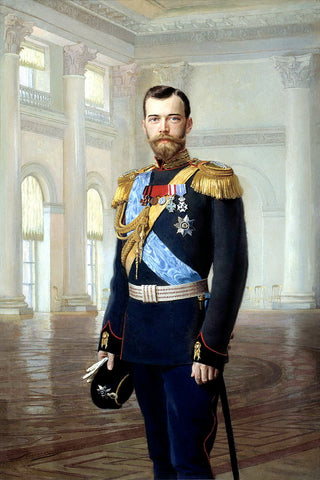
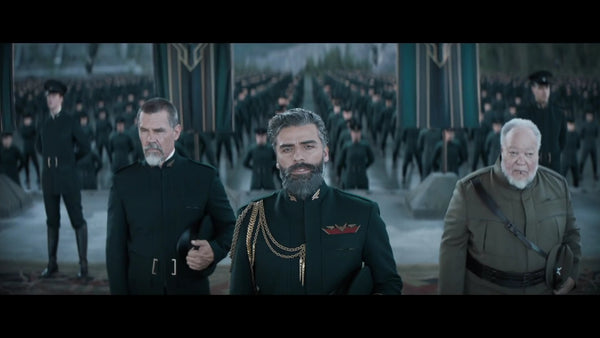
Images above: Nicholas II of Russia, painted by Earnest Lipgart (source: Wikimedia) and House Atreides, a scene from the film (source: X/Twitter)
Atreides' uniforms draw inspiration from paintings of the Romanovs (the last Imperial Family of Russia), conveying the idea of the end of a dynasty. While their armour is inspired by the Knights Templars. Their garments are crafted from exquisite fabrics like velvet and silk, often adorned with embroidery and jewels. Green is predominant, symbolizing nobility and royalty.


Image above: Lady Jessica wearing her elaborate costumes (source: X/Twitter)
Lady Jessica, the wife of Duke Leto Atreides, embodies a complex fusion of influences from her Bene Gesserit sisterhood roots, with whom she maintains a strong connection, and those of her acquired house, the Atreides. For the costume designers, this presented a particularly arduous task. To achieve it, they drew inspiration from 'The Master' of haute couture, Cristóbal Balenciaga, and Giotto and Goya paintings, creating elegant yet simple silk gowns.
Evil Insects for Dark Harkonnens
The sinister Harkonnens, with their dark and looming presence, evoke an aura of dread. Cloaked in heavy, dark fabrics like leather and fur, their attire resembles the texture of an insect's shell, amplifying the sense of repulsion and disgust towards them. Metallic bands adorn their garments, lending an alien quality to their appearance. The colour black dominates their attire, serving as a stark symbol of death. These characteristics paint a picture of malevolence, emphasizing their ruthless nature.
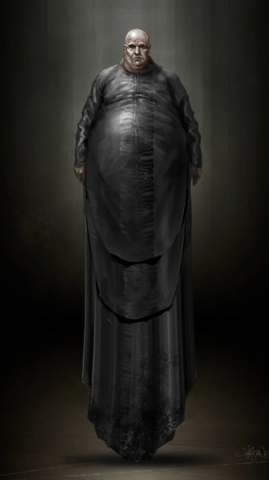

Images above: a concept drawing of Baron Harkonnen by Keith Christensen / Warner Bros, and Harkonnens photo by Chia Bella James / Warner Bros.
Additionally, hints of sadomasochistic imagery intertwine with their portrayal, with Vladimir Harkonnen himself depicted as a depraved paederast—a detail notably present in Lynch's cinematic adaptation but conspicuously absent in Villeneuve's rendition. This aspect reflects the author's stance, aligning with the societal norms of the time, where homosexuality and sexual freedom were viewed as obscene deviations, a viewpoint that caused significant conflict between Frank Herbert and his son, Bruce Calvin Herbert.
The Bene Gesserit: Mystery and Spirituality in Every Swath of Fabric
The Bene Gesserit sisterhood is a sect that chose to push human (particularly female) capabilities to the extreme to no longer rely on machines. Inspirations here are more nuanced and varied. They draw significantly from chess pieces, tarot cards and female Catholic monastic orders, as suggested by the title of their leader, the "Reverend Mother". Their iconic arrival on Caliban, cloaked in their sombre robes and heavy, enveloping hoods, echoes the imagery of cloistered nuns but simultaneously exudes a sense of power, asceticism, and detachment from the material world.
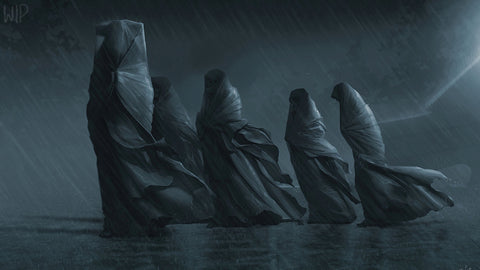

Images above: the Bene Gesserit concept art for Denis Villeneuve's Dune movie, and the Bene Gesserit’s Reverend Mother with Paul Atreides (source: Warner Bros).
There are clear nods to other cultural inspirations, such as Jewish mysticism (the perfect being the Sisterhood aims to create, the Kwisatz Haderach, takes its name from a Hebrew word meaning "the shortcut of the path") or Eastern asceticism. This time the predominance of black symbolizes secrecy. Accents of blue and green appear in small details, respectively evoking intellect and spirituality, core values of the sisterhood. Veils partially obscure their faces, enhancing the aura of mystery.
---------------------
The challenge West and Morgan faced was nothing short of Herculean, blending aesthetics, history, mysticism, and philosophy into attire destined to shape modern imagination for decades to come. It's a challenge they embraced and conquered, creating about 2,000 inspirational costumes.
This design process of looking at various cultures and histories for inspiration is the same that drives Psylo’s designers. For each of our collections, we choose to follow a certain theme like Runes and Nordic mythology, Alchemy & Astrology, or prehistoric art. Blending rich motifs from diverse cultures and eras, we create outwardly and timeless clothing.
You are invited to explore our collections by viewing our Lookbooks:

